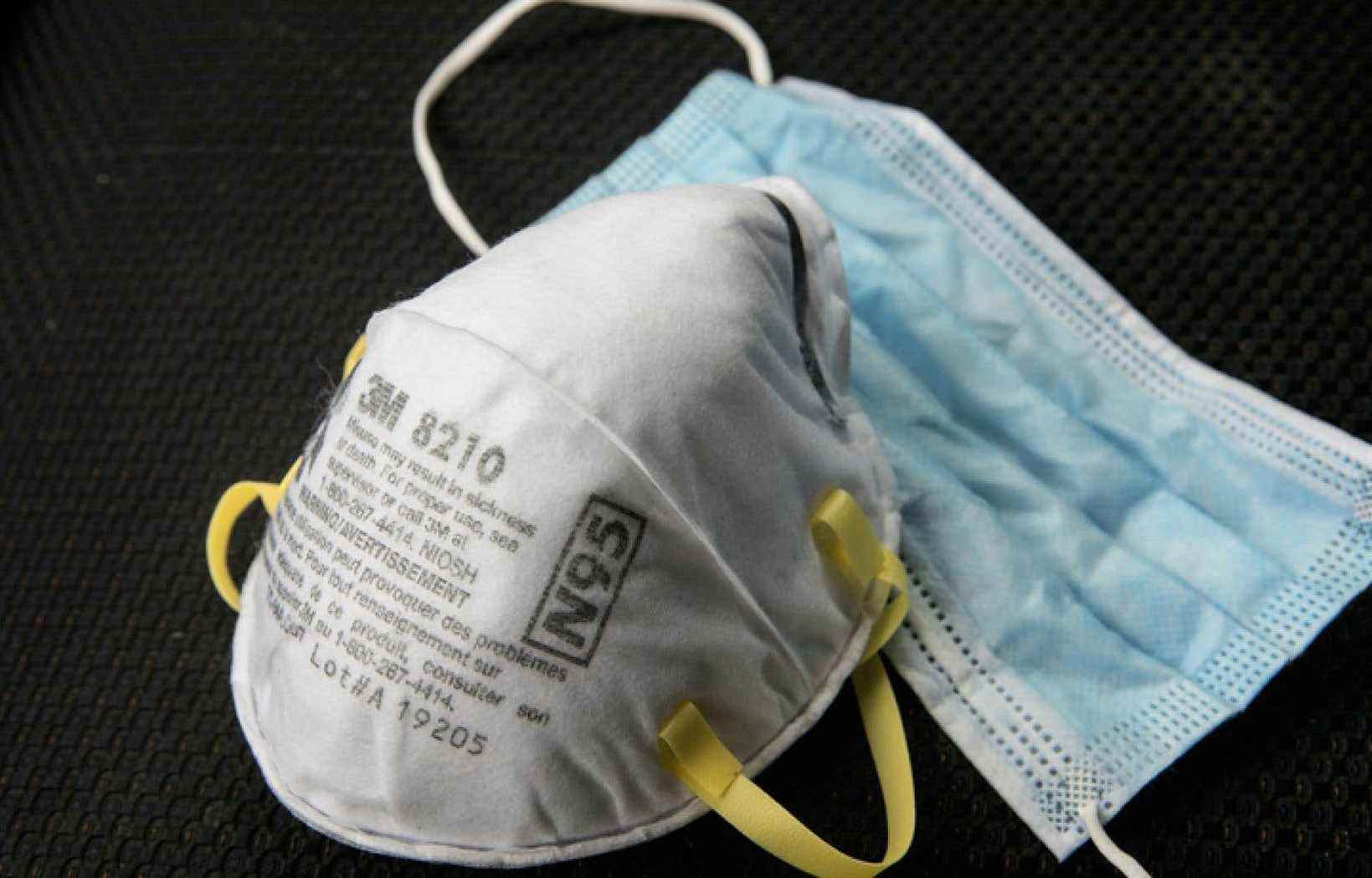COVID-19 cases are shattering records in Quebec and geriatricians are worried about the fate of residents living in CHSLDs. The CIUSSS du Center-Sud-de-l’Île-de-Montréal has just issued a directive recommending the wearing of the N95 mask, rather than the procedural one, in cold units where residents have been in contact with people with the disease. of COVID-19.
The CHSLD Bruchési, which is part of the CIUSSS du Center-Sud-de-l’Île-de-Montréal, is grappling with an outbreak in one of these units. Two residents and two healthcare workers have tested positive for the disease. Number of infected people could rise as screening is underway, says DD Sophie Zhang, Deputy Co-Head of Accommodation at the CIUSSS du Center-Sud-de-l’Île-de-Montréal.
“Omicron changes a lot of things,” she says. Before, I wasn’t a big N95 fanatic. But there, I think there is no doubt that there is an important air transmission. That worries me because in CHSLDs, we don’t have very good ventilation. “
The two older children contracted COVID-19 even though they were well protected: one of them had obtained three doses of the vaccine and the other, two doses after an infection. As for the caregivers, one was not vaccinated (but underwent a screening test three times a week), while the other had received two doses.
The CIUSSS has decided to act quickly, without waiting for a ministerial directive on the N95s. It now recommends that CHSLD employees wear this type of mask when cases are detected in a unit.
At the CHSLD Bruchési, the unit where cases have been detected was put under negative pressure to prevent the ambient air from being contaminated. “Yes, the patients are negative at the moment, but we consider that they are very very at risk and that they can develop it, says the DD Zhang. If we wait for the instructions [du ministère], we lose precious time. “
The N95s demanded by the unions
Since March, the Commission for Standards, Equity, Health and Safety at Work (CNESST) has required the wearing of N95s for all healthcare workers in lukewarm areas (suspected cases awaiting test results) , but not in a cold zone. Trade unions demand it in all circumstances.
The FSSS-CSN has also sent a letter to the Legault government as well as to the national director of public health, Dr.r Horacio Arruda, so that the N95s are deployed “in all environments and for all personnel, even while waiting for all the fit tests to be carried out”.
The union is also calling for this type of mask for workers in childcare centers (CPE). The FSSS-CSN argues that with the Omicron wave, many employees could fall in combat or have to isolate themselves.
The DD Zhang dreads him too. “What I fear for this wave is not illness and death among our residents, as was the case during the first waves,” she explains. With the triple vaccination, even if the residents catch it, the disease is often less severe. What I fear is a severe staff shortage that will hamper basic care! “
The Dr Quoc Dinh Nguyen, geriatrician and epidemiologist at the Center hospitalier de l’Université de Montréal (CHUM), believes that caregivers, caregivers and visitors to CHSLDs should wear a more protective mask than the procedural one, such as KN94 and KN95 . “They are still quite comfortable,” he notes.
In fact, if the government does not have a KN94 or KN95, the N95s could “certainly reassure and significantly decrease transmission,” said Dr Nguyen. As long as Quebec has enough of it. “It would be a much more frantic consumption,” he admits. But I don’t want us to fall back into the same error of saying “since we don’t have them, we don’t make the recommendation”. We must go where the evidence prompts us. “
The Dr David Lussier, geriatrician at the Institut universitaire de gériatrie de Montréal, for his part thinks that N95s should be used in CHSLDs “as soon as an employee is positive or has an outbreak alert”, and not only with positive residents. Its position matches that of the DD Zhang. “Ideally, we would have [tous] N95s, he says. But you always have to weigh the risks and the disadvantages. In CHSLDs, there are still very, very few [de cas]. “
During the press briefing by Prime Minister François Legault on Wednesday evening, Dr Horacio Arruda was asked about the N95s. He indicated that an opinion had been requested from the National Institute of Public Health (INSPQ) on this subject, specifying that “very few publications” related to Omicron had been published so far.
“In some clinical studies that are done in the field, the superiority of N95 versus the procedural mask is not always demonstrated in real time,” he said. In laboratory terms, it is superior. “
The Dr Horacio Arruda added that the directives concerning the N95 will be adapted according to the opinion of the INSPQ. “We will ensure that we have the necessary equipment to protect both clients and health workers and in the various settings. “
Experts believe on the contrary that the superiority of the N95 has already been demonstrated. The Dr André Veillette, doctor and immunologist at the Montreal Clinical Research Institute, thinks that health professionals should wear them in cold areas. “Even an ill-fitting N95 is superior to a surgical mask,” he says.
Some models are also “very comfortable”, according to him. “And no mist in the glasses!” He adds.
